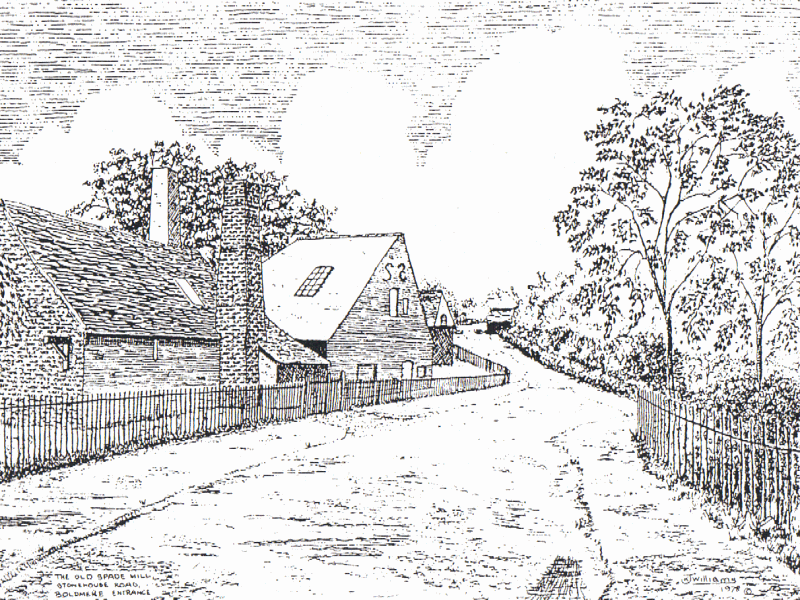Town School’s attendance register for 1826 gives the names of the first children to go to school under the newly-approved scheme for regulating Sutton’s affairs. The register records the names and occupations of each child’s parents; thirty of the sixty-one parents are described as “labourer”, reflecting the agricultural character of the town at the time.
There were some spade-makers, employed at Stonehouse Mill, Powells Pool, where thirty men were at work on the various processes from forging the iron to making the handles - this mill had 138 employees in 1861. Two of the parents were gunbarrel borers, working in Oughtons Mill at Holland House, a smaller concern than the spade mill, with a workforce of thirty men and boys (the boys were apprentices, perhaps taken from the workhouse as young as 11 years old). Three of the parents were wire-drawers, employed at Penns Mill, which had a workforce of 200 in its hey-day.
Several other parents were tradesmen - blacksmiths, carpenters, tailors, stocking weavers, sawmakers, millers, grinders and moulders. With these skills present in the population, and the proximity of the great manufacturing centres of Birmingham and the Black Country, Sutton Coldfield could have developed into a manufacturing town. Indeed, Francis Parkes, proprietor of the spade mill at Stonehouse forge, speaking at a public inquiry in 1855, said “Sutton Coldfield enjoys great celebrity for manufacturers. If we had the means of transit of other towns, Sutton Coldfield would be one of the first manufacturing places in the midland counties.”
But it was not to be, and many Suttonians, whether from snobbery or from love of the quiet rural character of the place, agreed with the sentiments of a petition of 1853 against “an influx of the inferior population of manufacturing districts, with their shops and factories, and render Sutton a smoky and depraved suburb of Birmingham.”
